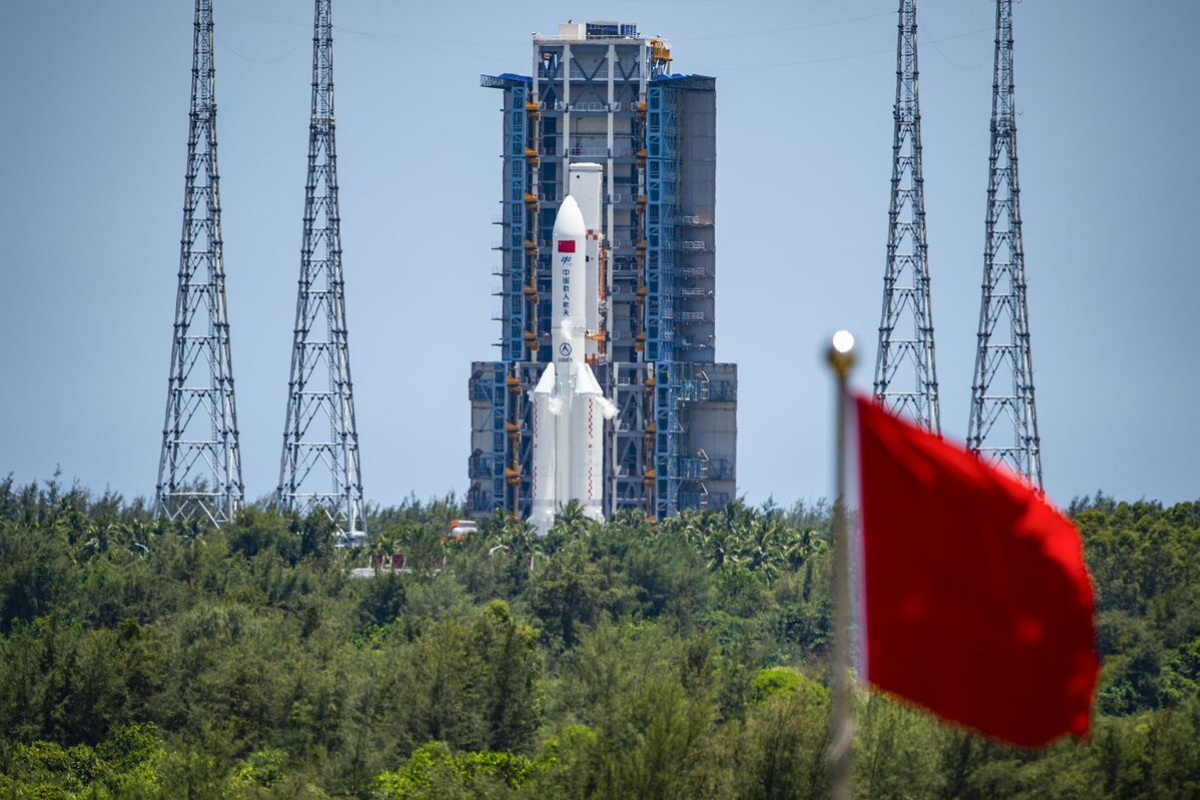- The 53-day mission aims to bring around two kilograms of lunar samples to Earth for analysis.
- The mission aims to collect material that may shed light on how the Moon was formed.
- The probe, named after the Moon goddess, is expected to land in the South Pole-Aitken Basin.
In a world first, China has launched a probe to collect samples from the far side of the Moon. An unmanned rocket carrying the Chang’e-6 probe blasted off from the Wenchang Space Launch Center at about 17:27 local time (10:27 BST). The 53-day mission aims to bring around two kilograms of lunar samples to Earth for analysis.
It will attempt to re-launch from the side of the moon facing away from Earth. This site is described as the dark side of the Moon because it is invisible from Earth, not because it does not catch the sun’s rays. It features a thicker, older crust with more craters, which are less covered by ancient lava flows than the near side.
This may enhance the possibility of collecting material that helps shed light on how the Moon was formed, scientists hope. Ge Ping, vice director of China’s Lunar Exploration and Space Engineering Center, informed reporters ahead of the launch, stating, “Chang’e-6 will collect samples from the far side of the Moon for the first time.”
The probe was named after the Moon goddess, one of the most popular figures in Chinese mythology. It is anticipated to land in the South Pole-Aitken Basin, which spans some 2,500km (1,553 miles) wide and up to 8km (5 miles) deep. Its objective is to collect lunar soil and rocks, as well as conduct experiments.
The launch inaugurates the first of three high-wire unmanned missions to the moon planned by China this decade. Chang’e-7 will explore the lunar south pole for water, while Chang’e-8 will endeavor to establish the technical feasibility of constructing a proposed base, known as the International Lunar Research Station. Its predecessor, Chang’e-5, brought back the youngest-ever lavas from the Moon upon its return in December 2020.
Friday’s lift-off signifies the most recent stage in China’s space exploration program, which competes with the US. Five years ago, China achieved the milestone of becoming the first country to land a rover on the Moon’s far side. By 2030, it aims to deploy its first astronauts to the Moon and to dispatch probes to collect samples from Mars and Jupiter.
[embedpost slug=”beijing-tightening-control-over-chinas-social-media-giants/”]




















